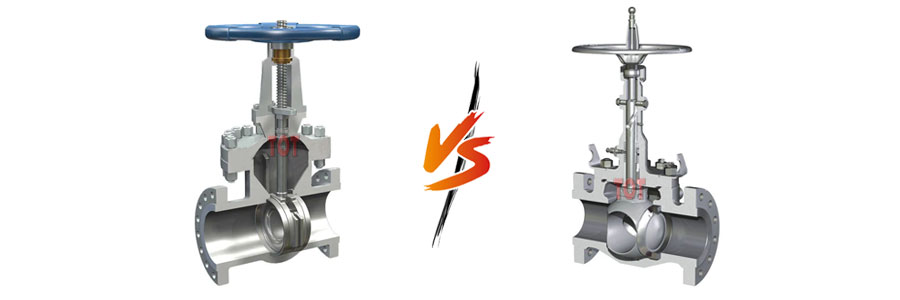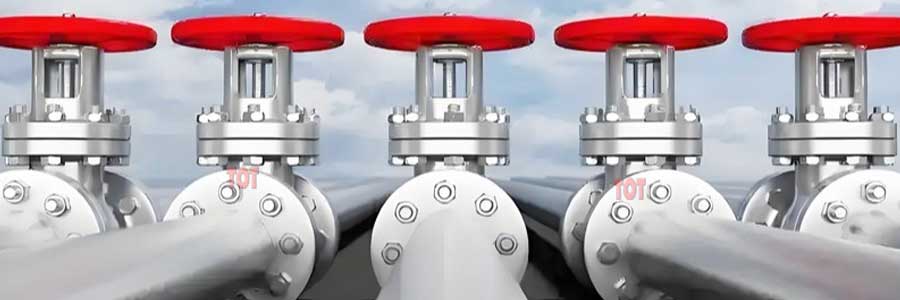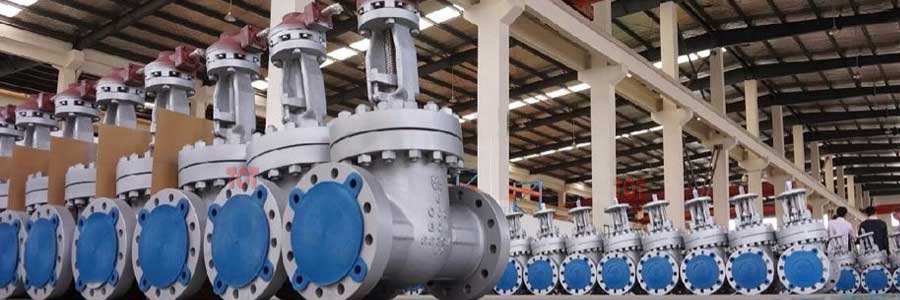
When controlling the flow of fluids in industrial pipelines, selecting the right valve can determine the efficiency, safety, and long-term performance of the system. Gate valves and ball valves are the two most commonly used shut-off valves, but an improperly selected control valve may cause the system to fail in the future, can lead to costly downtime or inefficiencies.
Next, this article compares gate valves and ball valves based on actual applications and discussions with customers, and explains how to choose the right control valve based on basic definitions, working principles, industry applications, etc., hoping to help you make your choice.
Table of Contents
ToggleBasic Definition
Gate Valve: A linear-motion valve that uses a vertically moving wedge (or plate) to start or stop fluid flow. Commonly used in waterworks, oil pipelines, and industrial processing where infrequent operation is expected.
Ball Valve: A rotary motion valve with a full bore or V-port ball disc inside. Turning the ball 90° allows or blocks flow. Popular for its fast shut-off, compact size, and leak-tight sealing.
How It Works?
Gate Valve: Operated by turning a handwheel multiple times to raise or lower a wedge (or plate) inside the valve body. The gate moves perpendicular to the flow and seats into a machined groove for sealing.
Ball Valve: Uses a quarter-turn handle or actuator to rotate a polished ball. When the hole is aligned with the pipe, the fluid will flow and the 90° turn will block the passage.
“Ball valves are better for quick shut-off and remote actuation. Gate valves suit slow, deliberate closure in large systems.”

Common Materials
| Component | Gate Valve Materials | Ball Valve Materials |
|---|---|---|
| Body | Cast Iron, Carbon Steel, SS | Brass, Stainless Steel, PVC |
| Seat | Metal, EPDM, NBR, Ceramic | PTFE, TFM, PEEK |
| Stem | Stainless Steel, Bronze | Stainless Steel, Brass |
| Ball / Gate | SS, Bronze, Alloy Steel | Chrome-plated Brass, SS |
Material selection depends on your fluid type, pressure and temperature. For corrosive media, ball valves with full PTFE seats are preferred; for abrasive slurries, gate valves with hard-faced seats perform better, such as a ceramic gate valve.
Advantages and Disadvantages
Gate Valve Advantages
- Excellent for full-flow applications (minimal pressure drop)
- Can flow in bi-directional, durable under high pressure and high temperature
- Less likely to cause water hammer when operated slowly
- Typically lower cost for large sizes
Gate Valve Disadvantages
- Slow operation (multi-turn)
- Prone to jamming from solids
- Not ideal for frequent operation or throttling
When to Use a Gate Valve?
“A mining plant that works with TOT Valve uses DN300 knife gate valves to handle thick slurries containing sand and clay particles. Ball valves would clog in a matter of weeks. The knife gate valve design reliably shuts off the media while minimizing seat erosion.”
Ball Valve Advantages
- Quarter-turn operation, Fast on/off operation
- Compact, lightweight and easy to install
- Excellent sealing and tight shut-off
- Easy to automate
Ball Valve Disadvantages
- Seats wear faster in slurries or high-temp fluids
- More expensive in large diameters
- Not suitable for throttling—can wear out seats
- Risk of water hammer in quick-close scenarios
When to Use a Ball Valve?
“A pharmaceutical customer that works with TOT Valve switched to a trunnion-style ball valve with PTFE seats for batch control. Automation improves consistency, and zero leakage means no product wasted.”
Gate Valve vs Ball Valve at a Glance
| Feature | Gate Valve | Ball Valve |
|---|---|---|
| Operation | Multi-turn (slow open/close) | Quarter-turn (fast open/close) |
| Flow Control | On/Off only (not for throttling) | On/Off only (not for throttling) |
| Sealing Type | Metal-to-metal (or resilient seat) | Soft seat (usually PTFE or reinforced) |
| Flow Path | Straight-through, minimal turbulence | Full bore or reduced bore |
| Pressure Drop | Very low when fully open | Low to moderate (depending on design) |
| Maintenance | More difficult, higher torque needed | Easier to maintain and automate |
| Common Size Range | Common in large diameters (DN50+) | More available in smaller sizes (DN15–DN100) |
| Ideal Use Cases | High-temperature, abrasive, or slurry media | Frequent actuation, tight shut-off, compact systems |
| Automation | Rare, needs motor/gearbox | Easy with electric/pneumatic actuators |

Industry Use Cases: Who Prefers What, and Why
| Industry | Common Valve Choice | Why |
|---|---|---|
| Oil & Gas | Gate Valve | Withstands temperature swings and high pressure |
| Chemical | Ball Valve | Tight shut-off and automation for dosing lines |
| Water Treatment | Gate Valve | Handles large volumes at lower cost |
| Food & Beverage | Ball Valve (Sanitary) | Easy to clean, fast actuation, hygienic design |
| Mining & Pulp | Knife Gate Valve | Cuts through thick slurry and fibrous material |
| HVAC Systems | Ball Valve | Compact, affordable, and maintenance-friendly |
Choosing the Right Valve: Real Decision Factors
We have discussed so much about the comparison between gate valves and ball valves above. So how do you choose the right control valve for your fluid system? In the real market, there are too many buyers who only focus on price or size. In fact, at TOT valves, our engineers will also compare the following factors and make suggestions:
- System Pressure & Temperature: Gate valves handle higher extremes; ball valves need soft-seat limits checked.
- Media Type: Ball valves are not suitable for applications with fluids containing solid particles such as mud, wastewater or fibrous fluids, gravel, etc. Gate valves tolerate more, especially knife types.
- Space & Orientation: Ball valves are compact; ideal for wall-mounted skids or small enclosures.
- Actuation Speed & Automation: Ball valves are actuator-ready. Gate valves often require manual gear or motorization.
- Leak Tightness Required: Ball valves seal better under low pressure. Some gate valves may seep slightly.
- Cycle Frequency: Use ball valves for fast, repeated on/off cycles. Gate valves wear faster under frequent use.
- Serviceability: Ball valves allow faster inline maintenance. Gate valves often require full system drain.
“In our experience across sectors like oil & gas, water treatment, and industrial automation, we rarely recommend a ‘one-size-fits-all’ solution. For systems with dirty or abrasive fluids, a knife gate valve with hard-faced seats performs best. If your system demands fast operation, zero leakage, and actuator compatibility, a trunnion ball valve is the ideal solution.”
At TOT Valve, we provide tailored support based on your fluid, flow rate, temperature, and budget. Reach out for a free quote and CAD based sizing recommendation.

Conclusion
Gate valves and ball valves each have strengths and limitations. The best valve for your system depends on the application, media, system design, and long-term operational needs. By understanding their differences, you’re already one step closer to making the right investment.
If you still have concerns? Contact us today! TOT Valve will be happy to provide you with a custom solution to meet your system needs.
FAQ
Can a Ball Valve be Used for Throttling?
Ball valves are not ideal for throttling as partial opening can cause seat damage. For flow regulation, globe valves are more suitable.
Are Gate Valves Suitable for High-pressure Applications?
Yes, gate valves are well-suited for high-pressure and high-temperature applications, especially in large-diameter pipelines.
Do Ball Valves Provide a Tight Seal?
Ball valves offer excellent sealing capabilities, often achieving bubble-tight shut-off, making them ideal for gas and liquid applications.
When Should Choose a Gate Valve Over a Ball Valve?
Choose a gate valve for applications requiring minimal pressure drop and infrequent operation, such as in water supply systems.
Can Gate Valves be Automated?
While possible, automating gate valves is less common and more complex compared to ball valves, which are easily automated with actuators.
Which Valve is Better for Slurry or Dirty Fluids?
Knife gate valves are better suited for slurry or fluids with suspended solids, as they are less prone to clogging compared to ball valves.
What Materials are Commonly Used for Gate and Ball Valves?
Gate valves are often made from cast iron, carbon steel, or stainless steel. Ball valves commonly use brass, stainless steel, or PVC, depending on the application.
